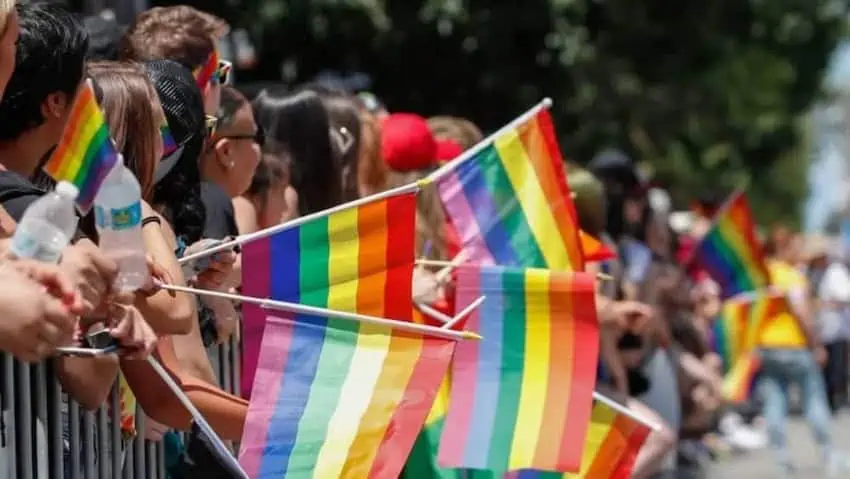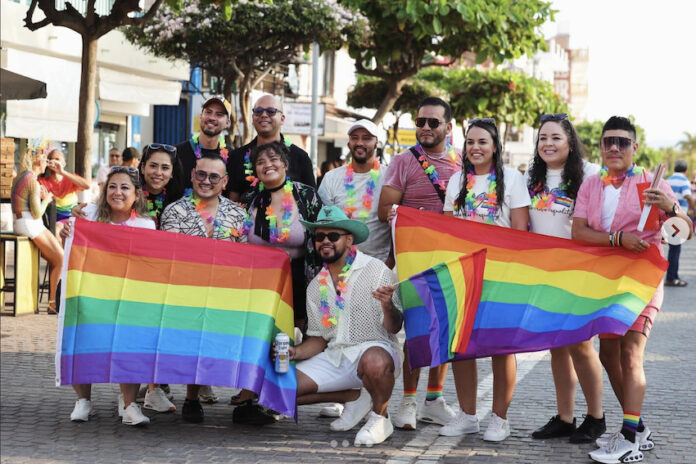There are many reasons to fall in love with Puerto Vallarta. For me, it was the sunsets, the jungle-lined beaches, the food scene and a beauty that goes much deeper than just the beach. But ask a queer traveler why Vallarta stands apart, and you’ll likely hear something more personal. They may tell you it feels like coming home.
Today, Puerto Vallarta is recognized as the LGBTQ capital of Mexico, a place where rainbow flags hang as proudly as the bougainvillea spilling over the balconies. The city’s Zona Romantica neighborhood is a full-blown “gayborhood,” buzzing with queer-owned cafes, boutique hotels, beach clubs and late-night dance floors. But the path to queer paradise didn’t appear overnight. It was carved by decades of quiet courage, community resilience and one very big Pride parade.

According to Javier Jiménez, president of Vallarta Pride, the turning point came in the late 1990s, when LGBTQ immigrants began arriving in large numbers, particularly from San Francisco and Los Angeles. “Along with the LGBTQ community, they began looking for safe and friendly places to meet,” he says. “Bars like Balcones and Paco Paco became social hubs for the community.”
Then came the tipping point: the 2002 opening of Blue Chairs, Mexico’s first openly LGBTQ hotel. Blue Chairs was more than just a place to sleep. It was a declaration that queer travelers belonged here. “From that moment on, says Jiménez, “Puerto Vallarta took firm steps toward becoming the best LGBTQ destination in Mexico and Latin America.”
Early entrepreneurs like Francisco Ruíz, John Crocket Moore, Frank Muts and the Greys — Gregory and Don — were instrumental in building the infrastructure for a thriving queer economy in nightlife, hospitality, arts and tourism. These business ventures were acts of defiance and vision.
“They showed the rest of the population that this was a present and active community that contributed to the economy and the destination’s promotion,” says Jiménez.
The numbers back it up. What began as a handful of LGBTQ bars has blossomed into more than 50, according to the Puerto Vallarta Tourism Board. The first Vallarta Pride parade had 40 participants and three floats. Jiménez says today there are more than 2,000 people and 50 floats that roll through the street each year. What was once a niche tourism segment has become a main engine of Vallarta’s economic lifeblood.
“It is estimated that 40 cents of every peso comes from the community,” Jiménez adds. LGBTQ tourism has also spurred a boom in construction, particularly in the southern part of the city. Condo towers, boutique hotels and mixed-use developments have transformed the skyline, many of them funded, owned or designed with queer travelers in mind.
But Vallarta’s queer identity goes deeper than hotel rooftops and themed parties. Though, let’s be real; the White Parties and Bear Week go off. There’s a thriving ecosystem of queer artists, chefs, activists, and business owners who keep the cultural heart beating. Galleries line the streets of Zona Romantica. Activists rally behind causes from HIV awareness to trans rights. The local Pride committee is run by a coalition of community leaders who live here year-round.
“Beyond nightlife, the LGBTQ community in Puerto Vallarta finds countless art galleries, a vast and exquisite gastronomic offering and tours to the rivers and mountains,” says Javier Jiménez. “It also boasts strong local activities that have forged a strong and proud community.”
A big part of what makes Vallarta unique is its sense of welcome, and not just for tourists. Locals, says Jiménez, have embraced the queer community, both socially and economically. “In general, the people of Puerto Vallarta are very friendly and open-minded,” he says. “Perhaps also helped by the community’s contribution to the city’s development.”
Still, travelers should be aware that even paradise has its risks. In recent months, the U.S. Consulate General in Guadalajara confirmed several reports of U.S. citizens being kidnapped after meeting individuals on dating apps in the Puerto Vallarta and Nuevo Nayarit areas. In some cases, victims and their families were extorted for ransom. While these incidents are deeply concerning, it’s important to note that similar crimes have occurred in cities around ht world. Caution is always advised when meeting strangers, particularly in unfamiliar places. Meet in public, let someone know where you’re going, and trust your instincts whether you’re in Vallarta, Berlin or Bangkok.
Of course, nowhere is without its blind spots. Jiménez is quick to point out that even in a place as seemingly inclusive as Vallarta, progress must be guarded. “Based on recent examples like what is happening in the U.S., where the LGBTQ community believed its rights were secure and these have recently been diminishing, the community must remain present,” he warns. “Defending what it has achieved, and actively participating in political and social spheres.”
Still, for first-time queer travelers, Puerto Vallarta offers freedom without fear. From wedding ceremonies on the beach, a sunset cocktail at Mantamar, or simply holding hands while strolling the Malecon, there’s a feeling here that is easy to recognize. It’s safety. It’s joy. It’s family.
And that’s the thing about Puerto Vallarta. You come for the views, the food and the party. At least, I did. But I, like so many others from all walks of life, stay because Puerto Vallarta feels like you’ve found your place in the sun.
Meagan Drillinger is a New York native who has spent the past 15 years traveling around and writing about Mexico. While she’s on the road for assignments most of the time, Puerto Vallarta is her home base. Follow her travels on Instagram at @drillinjourneys or through her blog at drillinjourneys.com.
